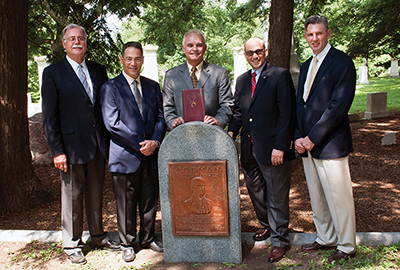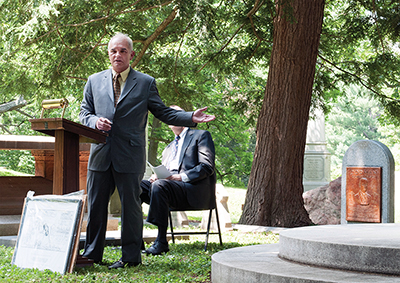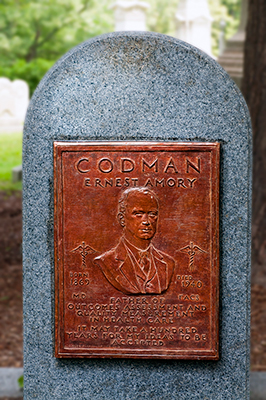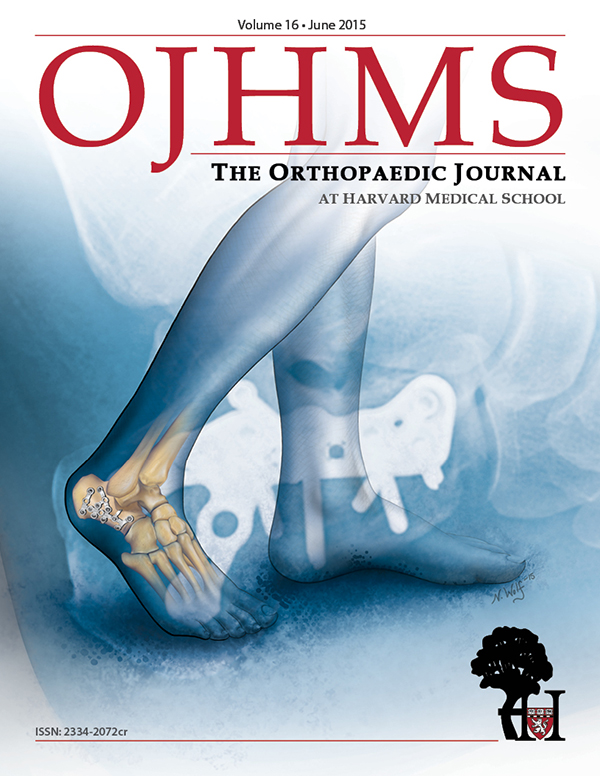In Memorium: E. Amory Codman
Jonathan B. Ticker, MD, William J. Mallon, MD, Laurence D. Higgins, MD, James H. Herndon, MD, Jon J.P. Warner, MD
The authors report no conflict of interest related to this work.
©2015 by The Orthopaedic Journal at Harvard Medical School
On July 22, 2014, E Amory Codman was memorialized at his gravesite in Mount Auburn Cemetery in Cambridge, Massachusetts. After having an unmarked grave for 74 years, a headstone was placed. The commissioned headstone states “Father of outcomes assessment and quality measurement in healthcare”. While this “End Result Idea” to follow patients to determine clinical outcomes may be his greatest legacy, Codman contributed much more to the medical field.
On July 22, 2014, E Amory Codman was memorialized at his gravesite in Mount Auburn Cemetery in Cambridge, Massachusetts. After having an unmarked grave for 74 years, a headstone was placed. The effort to mark EA Codman’s grave and to honor his many contributions to medicine was initiated a few years prior by members of the American College of Surgeons, and supported by the Joint Commission (JCAHO), American Shoulder & Elbow Surgeons (ASES), American Hospital Association, American Academy of Orthopaedic Surgeons (AAOS), and Massachusetts General Hospital. Orthopaedic surgeons in attendance were James Herndon, a past-President of AAOS and former chair of Orthopaedic Surgery at Harvard; Jon J.P. Warner, current chief of the MGH Shoulder Service and a past-President of ASES; William Mallon, Codman’s biographer and President of ASES; Laurence Higgins, current chief of the Brigham and Women’s Hospital Sports Medicine & Shoulder Service and ASES committee chair; and Jonathan Ticker, an ASES committee chair and historian (Figure 1). Mallon was included among those who addressed the assemblage to honor and remember Codman (Figure 2).


It took a number of years to accomplish this effort, with no apparent relatives to give permission, as Dr. Codman and his wife, Katherine Putnam Bowditch, had no children. As part of the publicity, on July 21, the Boston Globe published an article preceding the commemoration.1 Unbeknownst to all, two of Codman’s grand-nieces, Elizabeth Snyder and Virginia Harlan, had read the piece and were subsequently able to attend the event. Both had personal memories of Dr. Codman and shared their recollections, including his love for his extended family, as well as his hobbies of hunting and fishing.
The commissioned headstone states “Father of outcomes assessment and quality measurement in healthcare” (Figure 3). Codman noted that as early as 1900, he developed interest in what he termed “The End Result Idea, which was merely the common-sense notion that every hospital should follow every patient it treats, long enough to determine whether or not the treatment has been successful, and then to determine ‘if not, why not?’”2 Codman further wrote “We had found that this routine tracing of every case, interesting and uninteresting, had brought to our notice many things in which our knowledge, our technique, our organization, our own skill or wisdom, and perhaps even our care and our consciences, needed attention.” While this effort to follow patients to determine clinical outcomes may be his greatest legacy to the field of medicine, Codman also created the first anesthesia record in the form of an “ether chart” with Harvey Cushing in 1894,3 published an early roentgenology study of normal bone structures in 1898,4 performed the first rotator cuff repair in 1909,5 established the first registry of bone sarcoma in 1920,2 and wrote the first book on the shoulder in 1934,2 among other worthy accomplishments.

Also inscribed on EA Codman’s headstone is the statement “It may take a hundred years for my ideas to be accepted”. Codman wrote about his career, in “An Autobiographic Preface” at the beginning of his landmark book The Shoulder, “Honors … are conspicuously absent …but I am able to enjoy the hypothesis that I may receive some from a more receptive generation.”2 At his final resting place, he is at last able to “enjoy” this well-deserved recognition.



